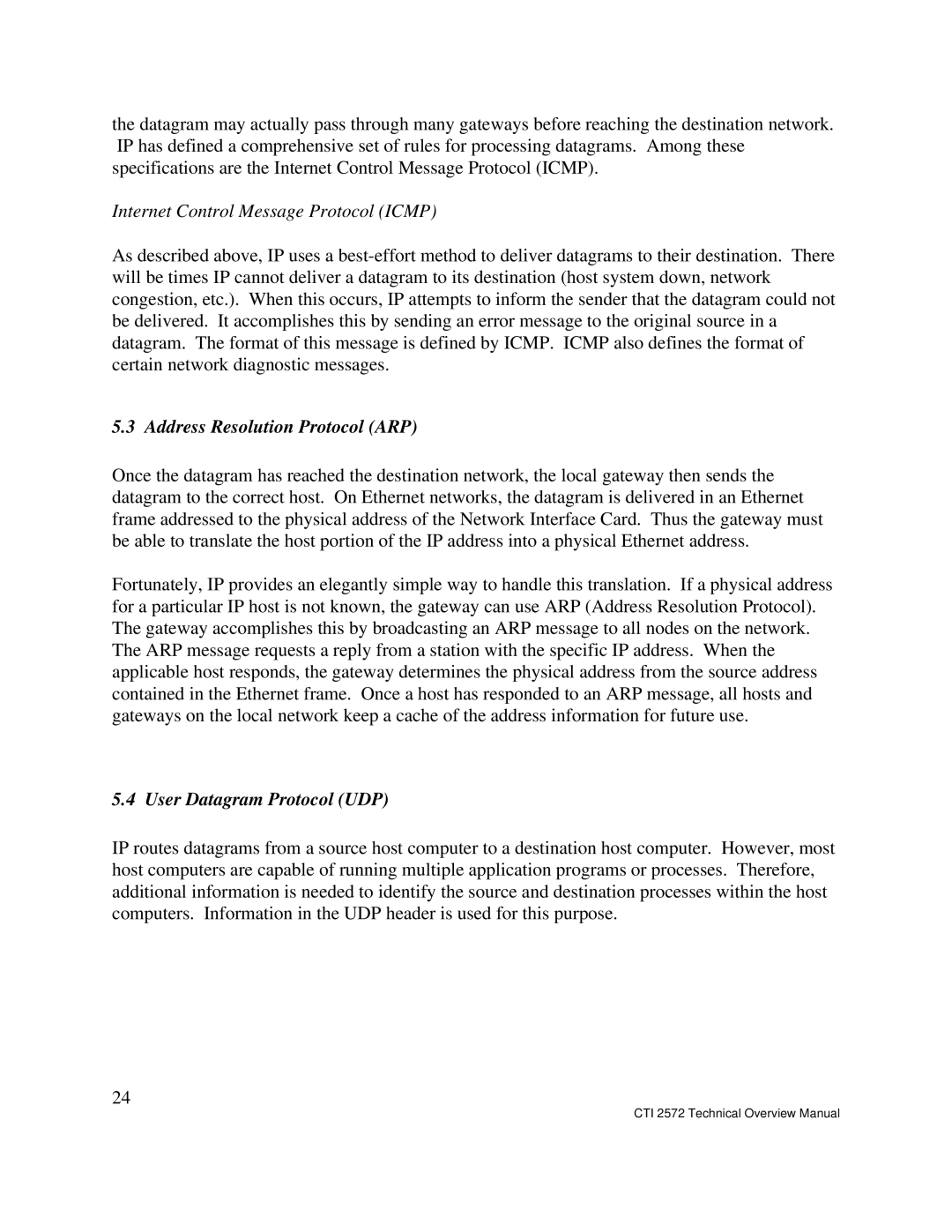the datagram may actually pass through many gateways before reaching the destination network. IP has defined a comprehensive set of rules for processing datagrams. Among these specifications are the Internet Control Message Protocol (ICMP).
Internet Control Message Protocol (ICMP)
As described above, IP uses a
5.3 Address Resolution Protocol (ARP)
Once the datagram has reached the destination network, the local gateway then sends the datagram to the correct host. On Ethernet networks, the datagram is delivered in an Ethernet frame addressed to the physical address of the Network Interface Card. Thus the gateway must be able to translate the host portion of the IP address into a physical Ethernet address.
Fortunately, IP provides an elegantly simple way to handle this translation. If a physical address for a particular IP host is not known, the gateway can use ARP (Address Resolution Protocol). The gateway accomplishes this by broadcasting an ARP message to all nodes on the network. The ARP message requests a reply from a station with the specific IP address. When the applicable host responds, the gateway determines the physical address from the source address contained in the Ethernet frame. Once a host has responded to an ARP message, all hosts and gateways on the local network keep a cache of the address information for future use.
5.4 User Datagram Protocol (UDP)
IP routes datagrams from a source host computer to a destination host computer. However, most host computers are capable of running multiple application programs or processes. Therefore, additional information is needed to identify the source and destination processes within the host computers. Information in the UDP header is used for this purpose.
24
CTI 2572 Technical Overview Manual
